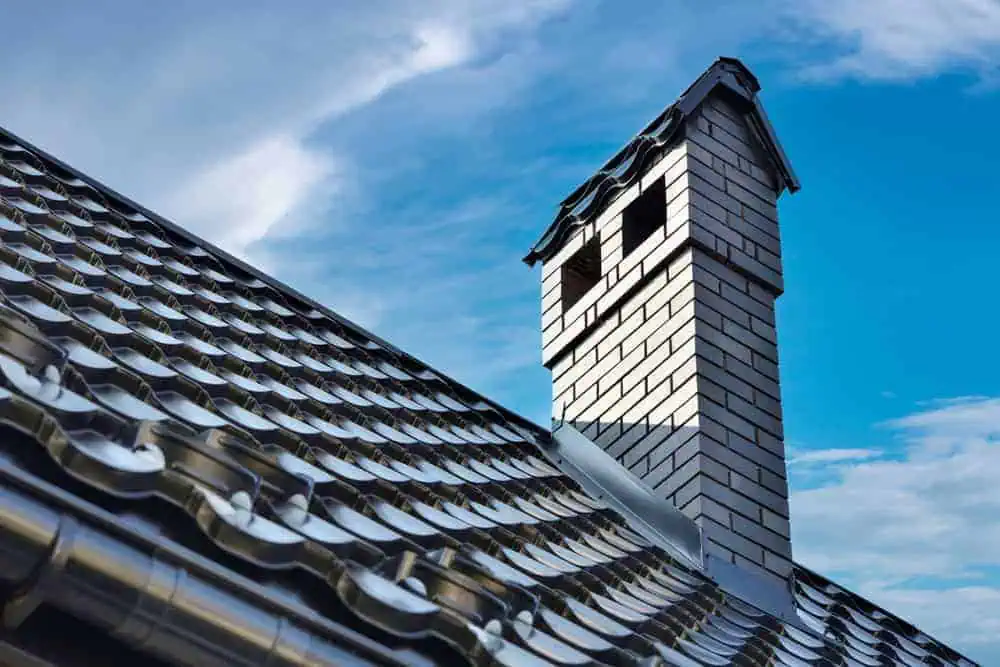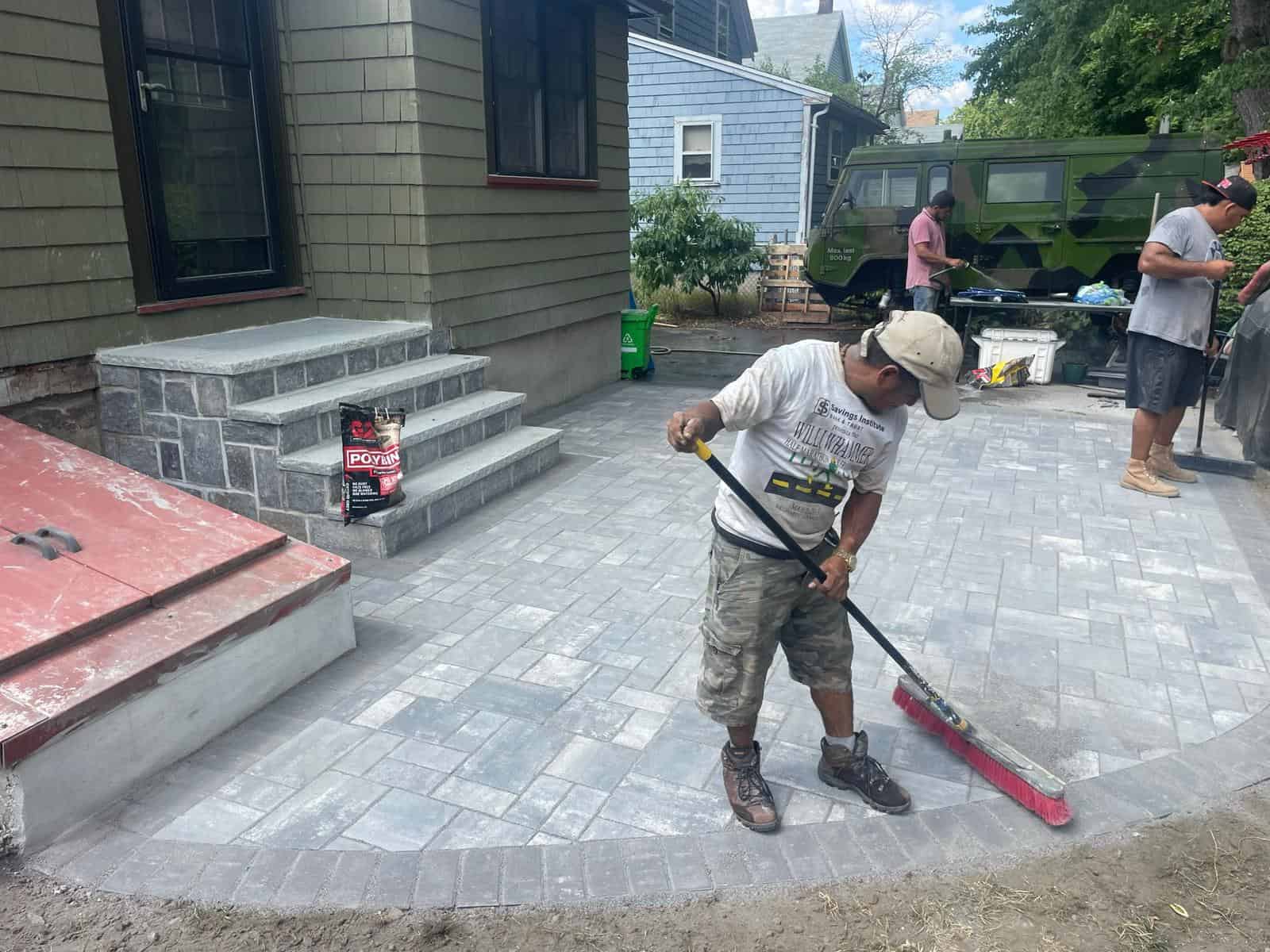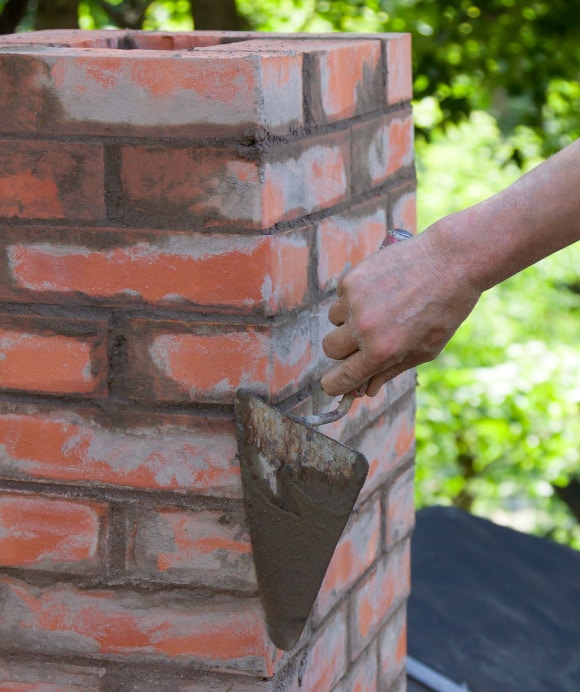Summary:
Visible Damage That Demands Immediate Attention
Some chimney problems announce themselves clearly. When you spot these obvious signs, don’t wait for spring to call a contractor.
Cracked or crumbling mortar between bricks signals that water has been doing damage. In Suffolk County’s climate, this deterioration accelerates rapidly once it starts. Loose or missing bricks create entry points for water that will freeze and expand, breaking apart more masonry.
White staining on your chimney exterior, called efflorescence, means water is moving through the masonry and carrying salts to the surface. This isn’t just cosmetic—it’s evidence of ongoing water penetration that needs professional attention.
How Boston Weather Creates Chimney Emergencies
Boston’s weather pattern creates the perfect storm for chimney damage. Understanding this process helps you recognize why quick action matters.
Water enters through small cracks, damaged flashing, or porous masonry. When temperatures drop below freezing, that water expands by about 9%, creating tremendous pressure inside your chimney materials. As it thaws, the water moves deeper into the damaged areas.
This freeze-thaw cycle repeats throughout winter, progressively breaking apart your chimney from the inside out. What starts as hairline cracks in October becomes loose bricks by March. We call this “spalling,” and it’s one of the most common reasons for emergency repairs in our area.
The damage compounds quickly because each freeze-thaw cycle creates more space for water to enter. By the time homeowners notice pieces of mortar or bricks in their yard, the problem has usually been developing for months. At this stage, simple repointing might not be enough—you could be looking at partial or complete chimney rebuilding.
Interior Warning Signs You Can't Ignore
Sometimes the most serious chimney problems show up inside your home first. These interior signs often indicate water has been penetrating your chimney system for some time.
Water stains on walls or ceilings near your chimney mean water is finding its way into your home’s structure. This water can travel through floors and walls, causing damage far from the actual chimney. By the time you see stains, there’s likely hidden damage to framing, insulation, and drywall.
Strange odors coming from your fireplace, especially musty or smoky smells when the fireplace isn’t in use, suggest moisture problems or ventilation issues. These odors can indicate mold growth inside the chimney system or problems with the flue liner that could lead to dangerous carbon monoxide exposure.
Rust on the damper or firebox components tells you water is getting where it shouldn’t. Metal components inside your chimney should stay dry—when they don’t, it’s a clear sign that your chimney’s water protection systems have failed. This rust doesn’t just affect the metal parts; it’s often accompanied by deterioration of surrounding masonry.
When DIY Fixes Become Dangerous Territory
Many homeowners attempt small chimney repairs themselves, but this approach often creates bigger problems. Chimney systems are more complex than they appear, and improper repairs can create serious safety hazards.
Masonry work requires specific materials and techniques to ensure proper adhesion and weather resistance. Using the wrong mortar type or application method can actually accelerate damage by trapping moisture or creating weak points that fail under stress.
Professional chimney servicing involves understanding how all components work together—the crown, flashing, liner, damper, and masonry structure all need to function as a system to keep water out and safely vent combustion gases.
The Hidden Costs of Waiting Too Long
Delaying chimney repair in Suffolk County’s climate isn’t just risky—it’s expensive. What starts as a few hundred dollars in repointing can quickly escalate to thousands in structural work.
Minor mortar repairs might cost $500-$1,500, but once water damage spreads to the chimney’s internal structure, you’re looking at liner replacement, crown rebuilding, and potentially complete reconstruction from the roofline up. These major repairs can run $5,000-$15,000 or more, depending on the extent of damage.
The financial impact goes beyond just chimney repair costs. Water damage inside your home can affect flooring, walls, and ceilings. Mold remediation adds thousands more to your bill. Insurance typically doesn’t cover chimney repairs from normal wear and weathering, making prevention your most cost-effective strategy.
Emergency repairs during winter months often cost significantly more than scheduled maintenance. When your chimney fails during heating season, you’re dealing with both the inconvenience of losing your fireplace and the premium costs that come with urgent repair work.
What Professional Assessment Really Reveals
We bring tools and expertise that reveal problems invisible to homeowners. A thorough inspection goes far beyond what you can see from the ground or inside your home.
Video scanning technology allows us to examine the entire interior of your chimney, including areas that would otherwise require partial dismantling to access. This reveals liner damage, blockages, and structural issues that could create safety hazards or prevent proper venting.
Moisture meters and thermal imaging can detect water penetration and heat loss that indicate problems with your chimney’s insulation or structural integrity. These tools help us develop repair plans that address root causes, not just visible symptoms.
Professional assessment also includes examining your chimney’s integration with your roof system. Flashing problems are among the most common sources of chimney leaks, but they’re difficult for homeowners to properly evaluate without getting on the roof and understanding how water flows around the chimney structure.
Protecting Your Investment with Expert Chimney Repair
Your chimney represents a significant investment in your home’s safety, functionality, and value. Professional chimney repair in Suffolk County protects this investment while ensuring your family’s safety through every heating season.
We understand how Boston’s climate affects masonry and can recommend preventive measures like waterproofing that extend your chimney’s life. We also ensure repairs meet current building codes and safety standards, protecting you from liability issues and ensuring optimal performance.
When you need reliable chimney servicing that addresses both immediate problems and long-term durability, Academy Masonry brings three decades of experience to every project. Our family-owned company understands Suffolk County’s unique challenges and provides the expertise your chimney deserves.



